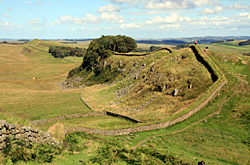

Individual Guided Tours of London and the UK by Private Car Driven by Blue Badge Guides
Tour Suggestions - North East
Join us for a Harry Potter tour to Alnwick Castle and its beautiful gardens. Then on to Durham Cathedral, one of England’s finest Norman buildings and finish on the coast with a visit to the enigmatic jewel, Holy Island.
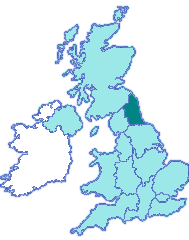
Lindisfarne / Holy Island
Holy Island is where St Aidan founded the Christian monastery of Lindisfarne in 635. A later Bishop, St Cuthbert, is buried at Durham Cathedral. The Lindisfarne Gospels, magnificent illuminated manuscripts of 700AD, are now housed in the British Library, London.
Lindisfarne Castle was built in 1550 to protect the harbour of Holy Island. It was restored and converted into a private residence by the architect Sir Edwin Lutyens in 1903.
Holy Island can only be visited when the tide is low enough to drive across the causeway.
Holy Island is where St Aidan founded the Christian monastery of Lindisfarne in 635. A later Bishop, St Cuthbert, is buried at Durham Cathedral. The Lindisfarne Gospels, magnificent illuminated manuscripts of 700AD, are now housed in the British Library, London.
Lindisfarne Castle was built in 1550 to protect the harbour of Holy Island. It was restored and converted into a private residence by the architect Sir Edwin Lutyens in 1903.
Holy Island can only be visited when the tide is low enough to drive across the causeway.

Alnwick Castle and Cragside
Recently voted Best Large Visitor Attraction in Britain, Alnwick Castle is the family home of the Duke of Northumberland. It has been owned by the same family since 1309 and was originally built to defend England from the Scots. Often called ‘The Windsor of the North’ the State Rooms contain a remarkable collection of portraits and furnishings. See the dungeon, follow in the footsteps of Harry Potter and walk through the new garden to visit an amazing Tree House.
The revolutionary home of Lord Armstrong, Cragside was the first house in the world to be lit by electricity. Armstrong was a Victorian innovator, engineer and gunmaker, who asked the architect Norman Shaw to transform Cragside into a proper country mansion. He made his fortune in water-driven hydraulics, for example the engines that originally lifted Tower Bridge in London.
Recently voted Best Large Visitor Attraction in Britain, Alnwick Castle is the family home of the Duke of Northumberland. It has been owned by the same family since 1309 and was originally built to defend England from the Scots. Often called ‘The Windsor of the North’ the State Rooms contain a remarkable collection of portraits and furnishings. See the dungeon, follow in the footsteps of Harry Potter and walk through the new garden to visit an amazing Tree House.
The revolutionary home of Lord Armstrong, Cragside was the first house in the world to be lit by electricity. Armstrong was a Victorian innovator, engineer and gunmaker, who asked the architect Norman Shaw to transform Cragside into a proper country mansion. He made his fortune in water-driven hydraulics, for example the engines that originally lifted Tower Bridge in London.
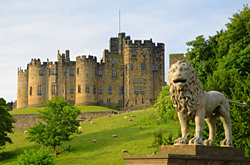
Durham and Beamish Open Air Museum
The city of Durham has developed on a peninsular created by a bend in the River Wear. The Cathedral and Castle complex is a World Heritage Site. The Norman Cathedral stands on the site of the earlier Saxon church, housing the shrine of St Cuthbert, who died in Lindisfarne in 687. Also buried in the Cathedral is the Venerable Bede, one of the greatest scholars of 8thc.
The 11thc Norman Castle was the home of the Prince-Bishops, who ruled the north of England for the King. It now houses University College, Durham.
Another award winning attraction in the North East is Beamish Open Air Museum. It provides you with a chance to explore what life was like in England in the early 1800s and 1900s. There are working steam trains, a chance to visit a coal mine, tram rides, a farm with animals, a town with a sweet shop, dentist’s surgery and solicitor’s office, and even a school.
The city of Durham has developed on a peninsular created by a bend in the River Wear. The Cathedral and Castle complex is a World Heritage Site. The Norman Cathedral stands on the site of the earlier Saxon church, housing the shrine of St Cuthbert, who died in Lindisfarne in 687. Also buried in the Cathedral is the Venerable Bede, one of the greatest scholars of 8thc.
The 11thc Norman Castle was the home of the Prince-Bishops, who ruled the north of England for the King. It now houses University College, Durham.
Another award winning attraction in the North East is Beamish Open Air Museum. It provides you with a chance to explore what life was like in England in the early 1800s and 1900s. There are working steam trains, a chance to visit a coal mine, tram rides, a farm with animals, a town with a sweet shop, dentist’s surgery and solicitor’s office, and even a school.
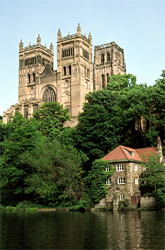
Raby Castle and the Bowes Museum
Raby Castle was mainly built in 14thc and is the home of Lord Barnard. It was the childhood home of the mother of Kings Edward IV and Richard III. The castle contains an interesting collection of furniture and paintings. Deer still roam the 250 acre park.
Just outside the town of Barnard Castle is the most fantastic French style chateau housing the Bowes Museum. It was purpose built in 19thc to house the collections of John and Joséphine Bowes. The collection includes paintings by Goya, Canaletto and El Greco, fine ceramics, furniture and textiles and a 230 year old Silver Swan automaton.
Raby Castle was mainly built in 14thc and is the home of Lord Barnard. It was the childhood home of the mother of Kings Edward IV and Richard III. The castle contains an interesting collection of furniture and paintings. Deer still roam the 250 acre park.
Just outside the town of Barnard Castle is the most fantastic French style chateau housing the Bowes Museum. It was purpose built in 19thc to house the collections of John and Joséphine Bowes. The collection includes paintings by Goya, Canaletto and El Greco, fine ceramics, furniture and textiles and a 230 year old Silver Swan automaton.
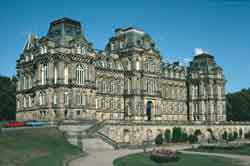
Hadrian’s Wall
The wall that defended the northern frontier of Britain was the most important monument built by the Romans in England. Emperor Hadrian ordered the construction of the wall in 122AD after he had visited Britain. The wall runs for 73 miles (117 km) from Wallsend on the River Tyne, in the east, to Bowness on the Solway Firth, in the west. Along the wall were towns, forts and milecastles, many of which can be visited today.
Corbridge was a Roman garrison town, Chesters was a cavalry fort with bath house, Housesteads is the best preserved fort on the wall and Vindolanda is where ancient writing tablets have been found, packed with information about life in Roman times.
The wall that defended the northern frontier of Britain was the most important monument built by the Romans in England. Emperor Hadrian ordered the construction of the wall in 122AD after he had visited Britain. The wall runs for 73 miles (117 km) from Wallsend on the River Tyne, in the east, to Bowness on the Solway Firth, in the west. Along the wall were towns, forts and milecastles, many of which can be visited today.
Corbridge was a Roman garrison town, Chesters was a cavalry fort with bath house, Housesteads is the best preserved fort on the wall and Vindolanda is where ancient writing tablets have been found, packed with information about life in Roman times.
